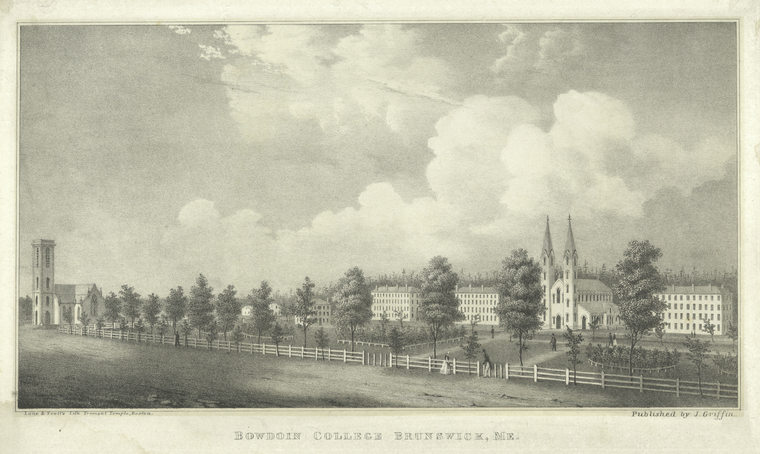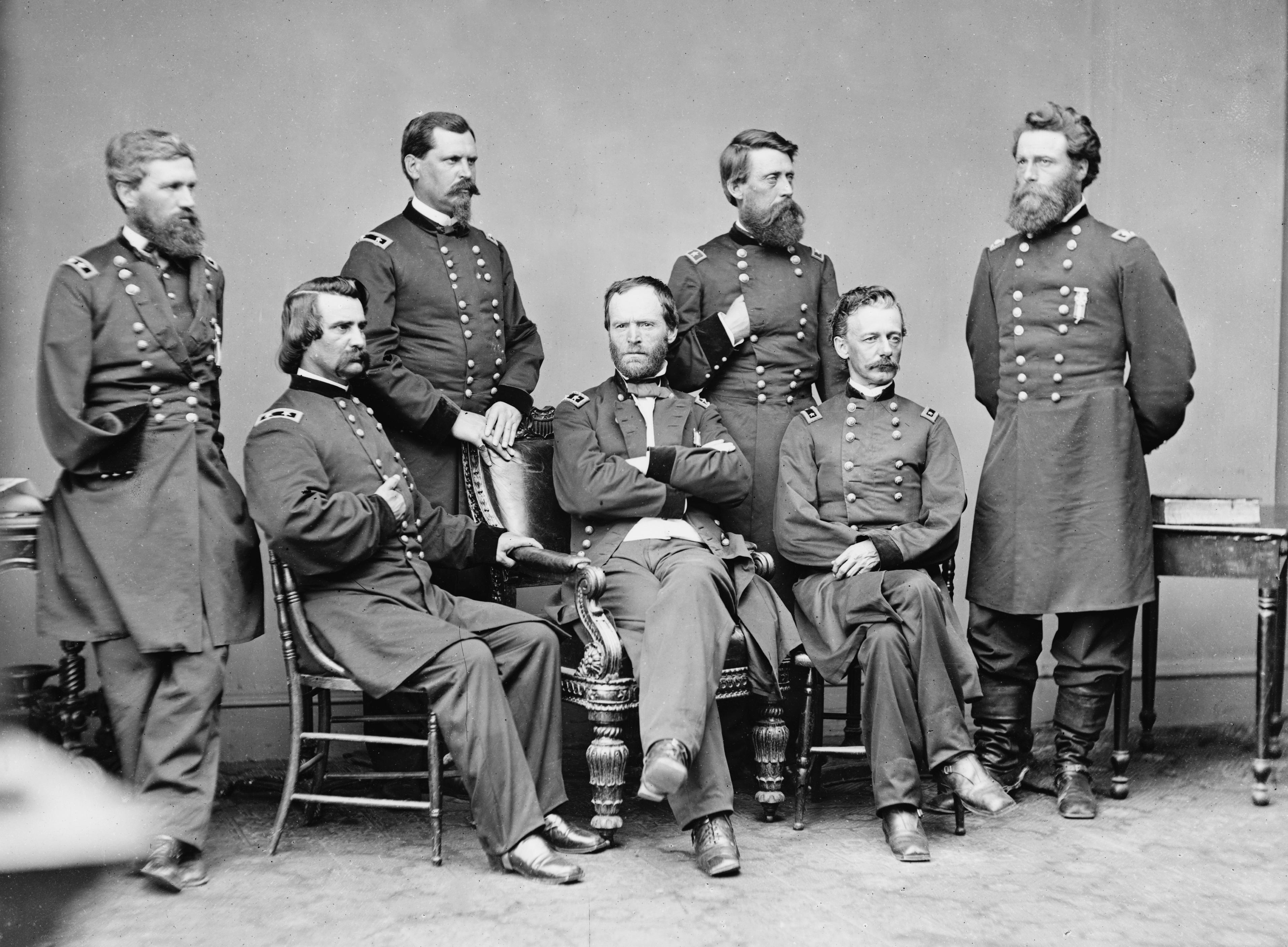|
Charles Henry Howard
Charles Henry Howard (August 28, 1838 – January 27, 1908) was an officer in the Union Army during the American Civil War, and a newspaper editor and publisher. He was the younger brother of Union general Oliver O. Howard. Early life Howard was born in Leeds, Maine. He attended Kent's Hill School and the Yarmouth Academy. He graduated from Bowdoin College in Brunswick, Maine in 1859 and then attended the Bangor Theological Seminary for one year before enlisting for the Civil War. Civil War Howard enlisted as a private and musician in the 3rd Maine Infantry in June 1861, upon the request of his brother Oliver O. Howard, and saw action at the First Battle of Bull Run. He was commissioned a second lieutenant in the 61st New York Infantry on January 24, 1862, and served during the Peninsula Campaign, where he was wounded during the Battle of Seven Pines at Fair Oaks, Virginia. He fought at the Battle of Antietam and was wounded again in the Battle of Fredericksburg. In 1863, h ... [...More Info...] [...Related Items...] OR: [Wikipedia] [Google] [Baidu] |
Leeds, Maine
Leeds is a town in Androscoggin County, Maine, United States. The population was 2,262 at the 2020 census. It is included in both the Lewiston-Auburn, Maine Metropolitan Statistical Area and the Lewiston-Auburn, Maine Metropolitan New England City and Town Area. History Leeds was named after Leeds, England, the ancestral home of the town's first settlers. Geography According to the United States Census Bureau, the town has a total area of , of which is land and is water. Demographics As of 2000 the median income for a household in the town was $37,993, and the median income for a family was $42,557. Males had a median income of $30,245 versus $24,250 for females. The per capita income for the town was $15,602. About 5.9% of families and 9.8% of the population were below the poverty line, including 9.7% of those under age 18 and 9.7% of those age 65 or over. 2010 census As of the census of 2010, there were 2,326 people, 895 households, and 655 families residing in the tow ... [...More Info...] [...Related Items...] OR: [Wikipedia] [Google] [Baidu] |
Battle Of Seven Pines
The Battle of Seven Pines, also known as the Battle of Fair Oaks or Fair Oaks Station, took place on May 31 and June 1, 1862, in Henrico County, Virginia, nearby Sandston, as part of the Peninsula Campaign of the American Civil War. It was the culmination of an offensive up the Virginia Peninsula by Union Maj. Gen. George B. McClellan, in which the Army of the Potomac reached the outskirts of Richmond. On May 31, Confederate General Joseph E. Johnston attempted to overwhelm two Federal corps that appeared isolated south of the Chickahominy River. The Confederate assaults, although not well coordinated, succeeded in driving back the IV Corps and inflicting heavy casualties. Reinforcements arrived, and both sides fed more and more troops into the action. Supported by the III Corps and Maj. Gen. John Sedgwick's division of Maj. Gen. Edwin V. Sumner's II Corps (which crossed the rain-swollen river on Grapevine Bridge), the Federal position was finally stabilized. Gen. Johnsto ... [...More Info...] [...Related Items...] OR: [Wikipedia] [Google] [Baidu] |
Major (United States)
In the United States Army, U.S. Marine Corps, U.S. Air Force and U.S. Space Force, major is a field-grade military officer rank above the rank of captain and below the rank of lieutenant colonel. It is equivalent to the naval rank of lieutenant commander in the other uniformed services. Although lieutenant commanders are considered junior officers by their respective services (Navy and Coast Guard), the rank of major is that of a senior officer in the United States Army, the United States Marine Corps, and the United States Air Force. The pay grade for the rank of major is O-4. The insignia for the rank consists of a golden oak leaf, with slight stylized differences between the Army/Air Force version and the Marine Corps version. Promotion to major is governed by the Department of Defense policies derived from the Defense Officer Personnel Management Act of 1980. Army A major in the U.S. Army typically serves as a battalion executive officer (XO) or as the battalion operat ... [...More Info...] [...Related Items...] OR: [Wikipedia] [Google] [Baidu] |
Second Lieutenant
Second lieutenant is a junior commissioned officer military rank in many armed forces, comparable to NATO OF-1 rank. Australia The rank of second lieutenant existed in the military forces of the Australian colonies and Australian Army until 1986. In the colonial forces, which closely followed the practices of the British military, the rank of second lieutenant began to replace ranks such as ensign and cornet from 1871. New appointments to the rank of second lieutenant ceased in the regular army in 1986. Immediately prior to this change, the rank had been effectively reserved for new graduates from the Officer Cadet School, Portsea which closed in 1985. (Graduates of the Australian Defence Force Academy (ADFA) and the Royal Military College, Duntroon (RMC-D) are commissioned as lieutenants.). The rank of second lieutenant is only appointed to officers in special appointments such as training institutions, university regiments and while under probation during training. Trai ... [...More Info...] [...Related Items...] OR: [Wikipedia] [Google] [Baidu] |
Bangor Theological Seminary
Bangor Theological Seminary was an ecumenical seminary, founded in 1814, in the Congregational tradition of the United Church of Christ. Located in Bangor, Maine, and Portland, Maine, it was the only accredited graduate school of religion in Northern New England The seminary had campuses in Bangor and Portland, Maine. Its primary mission was preparation for Christian ministry (now general theological education). Graduate programs have included the Master of Divinity (M.Div.), Master of Arts (MA) and Doctor of Ministry (D.Min.) degrees. The school was accredited by the Association of Theological Schools in the United States and Canada, New England Association of Schools and Colleges, and Maine Board of Education. Bangor Theological Seminary was an official Open and Affirming seminary. The school closed with its final commencement service on June 22, 2013. History Bangor Theological Seminary was originally of a much more conservative tradition/philosophy than what it evolv ... [...More Info...] [...Related Items...] OR: [Wikipedia] [Google] [Baidu] |
Bowdoin College
Bowdoin College ( ) is a private liberal arts college in Brunswick, Maine. When Bowdoin was chartered in 1794, Maine was still a part of the Commonwealth of Massachusetts. The college offers 34 majors and 36 minors, as well as several joint engineering programs with Columbia, Caltech, Dartmouth College, and the University of Maine. The college was a founding member of its athletic conference, the New England Small College Athletic Conference, and the Colby-Bates-Bowdoin Consortium, an athletic conference and inter-library exchange with Bates College and Colby College. Bowdoin has over 30 varsity teams, and the school mascot was selected as a polar bear in 1913 to honor Robert Peary, a Bowdoin alumnus who led the first successful expedition to the North Pole. Between the years 1821 and 1921, Bowdoin operated a medical school called the Medical School of Maine. The main Bowdoin campus is located near Casco Bay and the Androscoggin River. In addition to its Brunswick campus, ... [...More Info...] [...Related Items...] OR: [Wikipedia] [Google] [Baidu] |
Oliver O
Oliver may refer to: Arts, entertainment and literature Books * ''Oliver the Western Engine'', volume 24 in ''The Railway Series'' by Rev. W. Awdry * ''Oliver Twist'', a novel by Charles Dickens Fictional characters * Ariadne Oliver, in the novels of Agatha Christie * Oliver (Disney character) * Oliver Fish, a gay police officer on the American soap opera ''One Life to Live'' * Oliver Hampton, in the American television series ''How to Get Away with Murder'' * Oliver Jones (''The Bold and the Beautiful''), on the American soap opera ''The Bold and the Beautiful'' * Oliver Lightload, in the movie ''Cars'' * Oliver Oken, from ''Hannah Montana'' * Oliver (paladin), a paladin featured in the Matter of France * Oliver Queen, DC Comic book hero also known as the Green Arrow * Oliver (Thomas and Friends character), a locomotive in the Thomas and Friends franchise * Oliver Trask, a controversial minor character from the first season of ''The O.C.'' * Oliver Twist (character ... [...More Info...] [...Related Items...] OR: [Wikipedia] [Google] [Baidu] |
Sherman's March To The Sea
Sherman's March to the Sea (also known as the Savannah campaign or simply Sherman's March) was a military campaign of the American Civil War conducted through Georgia from November 15 until December 21, 1864, by William Tecumseh Sherman, major general of the Union Army. The campaign began with Sherman's troops leaving the captured city of Atlanta on November 15 and ended with the capture of the port of Savannah on December 21. His forces followed a " scorched earth" policy, destroying military targets as well as industry, infrastructure, and civilian property, disrupting the Confederacy's economy and transportation networks. The operation debilitated the Confederacy and helped lead to its eventual surrender. Sherman's decision to operate deep within enemy territory without supply lines was unusual for its time, and the campaign is regarded by some historians as an early example of modern warfare or total war. Background and objectives Military situation Sherman's "March ... [...More Info...] [...Related Items...] OR: [Wikipedia] [Google] [Baidu] |
Battle Of Gettysburg
The Battle of Gettysburg () was fought July 1–3, 1863, in and around the town of Gettysburg, Pennsylvania, by Union and Confederate forces during the American Civil War. In the battle, Union Major General George Meade's Army of the Potomac defeated attacks by Confederate General Robert E. Lee's Army of Northern Virginia, halting Lee's invasion of the North. The battle involved the largest number of casualties of the entire war and is often described as the war's turning point due to the Union's decisive victory and concurrence with the Siege of Vicksburg.Rawley, p. 147; Sauers, p. 827; Gallagher, ''Lee and His Army'', p. 83; McPherson, p. 665; Eicher, p. 550. Gallagher and McPherson cite the combination of Gettysburg and Vicksburg as the turning point. Eicher uses the arguably related expression, " High-water mark of the Confederacy". After his success at Chancellorsville in Virginia in May 1863, Lee led his army through the Shenandoah Valley to begin his second ... [...More Info...] [...Related Items...] OR: [Wikipedia] [Google] [Baidu] |




